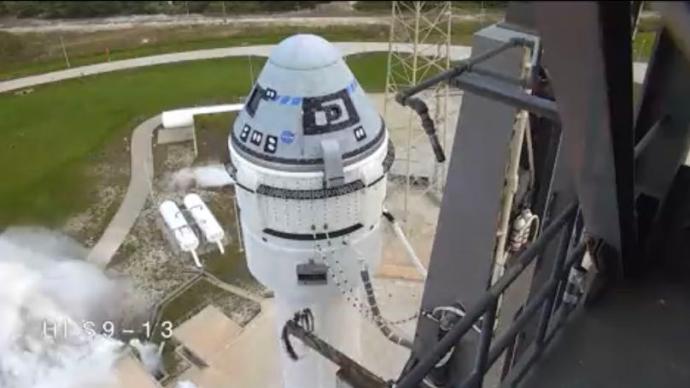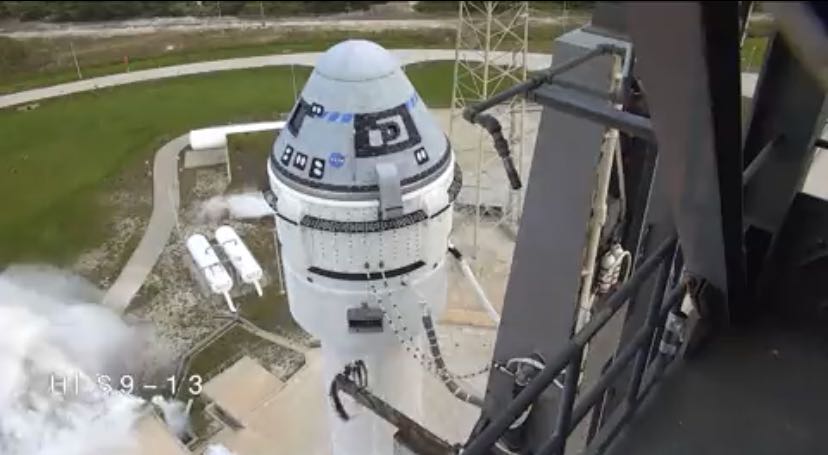
 At 18:54 ET on May 19th, Boeing "Starliner" (CST-100 Starliner) aboard the United Launch Alliance (ULA) "Atlas 5" rocket, from Cape Canaveral, Florida Space Force The base lifts off uncrewed to the International Space Station to test the end-to-end capabilities of the crewed system for NASA's Commercial Crew Program.
At 18:54 ET on May 19th, Boeing "Starliner" (CST-100 Starliner) aboard the United Launch Alliance (ULA) "Atlas 5" rocket, from Cape Canaveral, Florida Space Force The base lifts off uncrewed to the International Space Station to test the end-to-end capabilities of the crewed system for NASA's Commercial Crew Program.The "Starliner" carries about 500 pounds (about 227 kilograms) of NASA cargo and astronaut supplies, as well as more than 300 pounds (about 136 kilograms) of Boeing's cargo, and is expected to dock at the International Space Station at 19:10 on May 20. After the successful docking, at 11:45 on May 21, the astronauts on the space station will open the hatch of the "Starliner". The "Starliner" will leave the space station on May 25, return to Earth, and land in the western desert of the United States, when it will bring back 600 pounds (about 272 kilograms) of cargo.
The launch, Boeing's second uncrewed orbital test flight, will provide data for NASA to certify Boeing's Crew Transportation System for regular flights of astronauts to and from the space station. If the "Starliner" is certified, NASA will also use it to perform missions in the future, with up to four astronauts going to the space station at a time, continuing to increase the number of astronauts on the space station and the scientific research carried out in the orbiting laboratory. NASA said the launch and orbit was an important milestone in Boeing's second uncrewed orbital test flight, bringing the United States one step closer to having two separate crewed systems to and from the International Space Station.
 "Starliner" is part of NASA's Commercial Crew Program. In 2011, after the retirement of the US space shuttle, the means of transporting astronauts to and from the space station in the United States all "relyed" on Russian spacecraft. In order to change this situation, NASA strongly supports the development of commercial manned spaceflight, hoping that the mode of cooperation between the government and enterprises can breed this industry.
"Starliner" is part of NASA's Commercial Crew Program. In 2011, after the retirement of the US space shuttle, the means of transporting astronauts to and from the space station in the United States all "relyed" on Russian spacecraft. In order to change this situation, NASA strongly supports the development of commercial manned spaceflight, hoping that the mode of cooperation between the government and enterprises can breed this industry.In 2014, Boeing and SpaceX received large contracts of $4.2 billion and $2.6 billion respectively from NASA to build the "Starliner" manned spacecraft and the manned Dragon spacecraft. Now SpaceX has transported professional astronauts to the International Space Station for NASA for the fifth time.
Boeing conducted the first uncrewed test flight of the "Starliner" on December 20, 2019. At that time, the "Starliner" carrying a dummy took off from Cape Canaveral on the "Atlas 5" carrier rocket, but the result was a big drop. The "Starliner" timer was 11 hours wrong and wasted in vain. Too much propellant in turn led to the cancellation of the docking plan with the space station.
Subsequently, an independent review panel jointly conducted by NASA and Boeing made 80 rectification recommendations for the investigation of the failure of the first uncrewed test flight of the "Starliner", about half of which involved how Boeing and NASA solved the problem of software development and system testing. Even NASA admits that decades of cooperation with Boeing have created blind trust.
Related Posts
0 Comments
Write A Comments